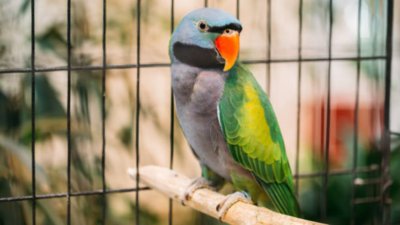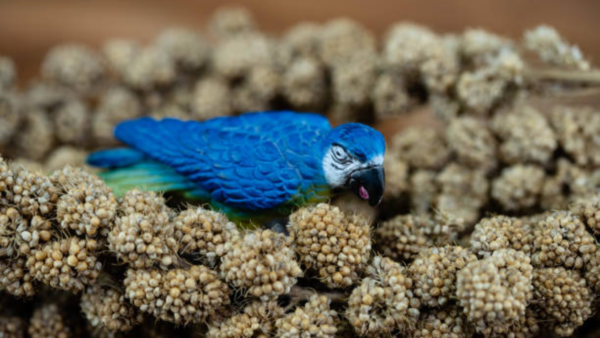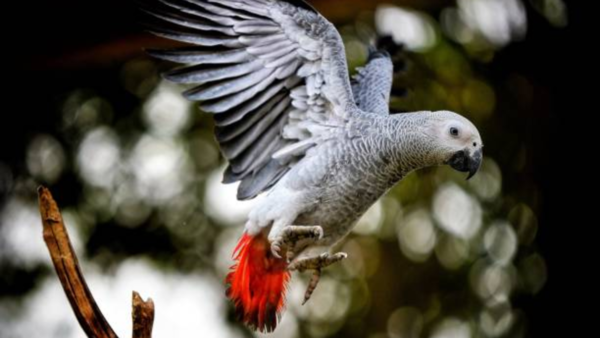
Parrots are admired worldwide for their intelligence, vivid colours, and engaging personalities. However, not all parrot species are suitable or legal to keep as pets. In fact, several countries have placed strict bans on the ownership of certain parrots, either because they are endangered or pose a threat to native ecosystems.
Here are seven parrot species that are banned from pet ownership in many parts of the world.
Pesquet’s Parrot (Dracula Parrot)
Native to the rainforests of New Guinea, the Pesquet’s Parrot, often called the Dracula Parrot due to its gothic appearance, is known for its black and red plumage. While striking to look at, this species is classified as Vulnerable by the IUCN due to habitat loss and illegal trapping. As a result, it is protected under international laws and banned from trade and ownership in many regions.
Lear’s Macaw
This deep blue macaw is native to a small region in Brazil and is considered Endangered. Its limited habitat and the threat of illegal trade have led to severe population declines. Lear’s Macaws are protected under the Convention on International Trade in Endangered Species (CITES), making it illegal to own or sell them across borders without special permits.
Spix’s Macaw
Famously featured in the animated movie Rio, the Spix’s Macaw is critically endangered and possibly extinct in the wild.
Conservation efforts have kept a small number alive in captivity, but strict bans are in place to prevent any private ownership. Trade and transport of these birds are heavily restricted and only allowed for breeding and conservation purposes.

Kakapo
A flightless, nocturnal parrot from New Zealand, the Kakapo is one of the world’s rarest birds. With fewer than 300 individuals remaining, all of which are under government protection, this parrot is completely off-limits for pet ownership.
Conservationists closely monitor the existing population to help it recover.
African Grey Parrot
Highly intelligent and capable of mimicking human speech, the African Grey Parrot has long been popular in the pet trade. Unfortunately, this popularity has led to overexploitation and a sharp decline in wild populations. It is now listed under CITES Appendix I, which bans international trade in wild-caught birds. In many countries, even captive-bred African Greys require special documentation.

Cape Parrot
Native to South Africa, the Cape Parrot is facing the dual threats of habitat destruction and illegal capture. Although not as well-known as other parrots, it is rare in the wild and considered vulnerable. Laws in South Africa prohibit the capture and sale of wild Cape Parrots to help preserve the species.
Monk Parakeet
Unlike the others on this list, the Monk Parakeet is not endangered. However, it is considered an invasive species in parts of the United States and Australia.
Monk Parakeets can build massive nests that damage power lines and displace native birds. Because of this, they are banned in several U.S. states and Australian territories.While parrots can be wonderful companions, it is crucial to understand the legal and ethical implications of pet ownership. These bans serve an important purpose: protecting endangered species and preserving natural ecosystems. If you are considering adopting a parrot, always choose legal, captive-bred birds and support responsible pet ownership.

 1 day ago
46
1 day ago
46




























 English (US)
English (US)